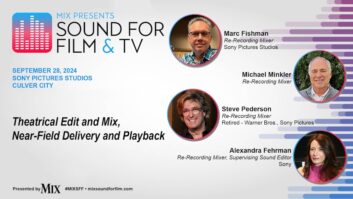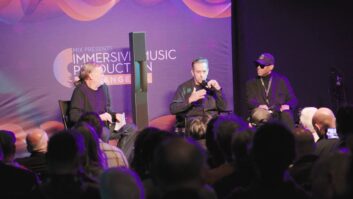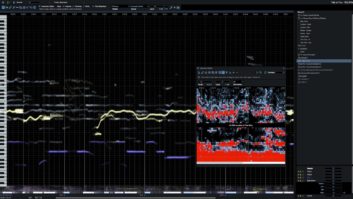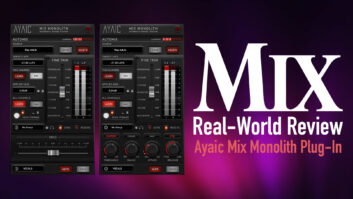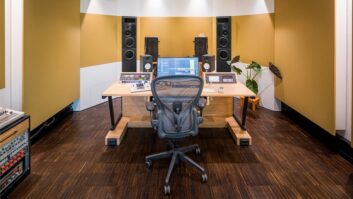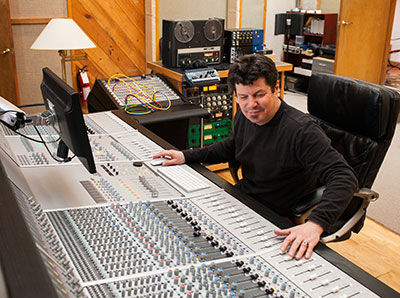
The Kitchen Sink Recording Studio opened about 10 years ago, “in a rambling old adobe house north of the city of Santa Fe,” according to Jono Manson, studio owner/engineer. The studio had always been a work in progress, and while Manson outfitted it with all of the necessary equipment to make great recordings, at the end of 2015 he and his business partner, fellow engineer Tim Schmoyer, saw that a property—a former studio in downtown Santa Fe—had become available.
“Tim and I could not resist the opportunity,” Manson says. So they took over the property in October 2015, and by early November, the Kitchen Sink was in full swing.
With the exception of a few “dark” periods, the space had been a functioning studio for the better part of 30 years. “It was constructed the right way, from the ground up around 1989,” Manson says. “All of the rooms were built to exacting specifications. I had worked on quite a number of projects in this facility, both as a producer and session musician, in its former incarnation back in the mid-1990s.”
The new studio has a 650-square-foot live room with 21-foot ceilings and skylights. The two iso rooms—90 and 75 square feet, respectively—both have line of sight to the control room, the live room and to one another. “The real kicker is the control room, which is almost 400 square feet with 16-foot-high ceilings—and more skylights,” Manson says.
At the center of the studio is a new 36-channel Audient ASP8024 mixing console with Dual Layer Control. All of Manson’s outboard gear, including a nice complement of new and vintage preamps and dynamics, as well as his entire mic closet collected over the course of 20 years, made the move. A lot of great vintage amps and keyboards came “down the hill” with Manson, but the Kitchen Sink also acquired some gear from the former owner.
“We inherited a nice array of mics, including a fleet of Gefells and tasty old 414s, a great vintage U 47, and many other cool pieces, including a Hammond B3 and an Otari MX 80 and MTR 10, all of which are up and running and sounding great,” Manson says.
Apart from cosmetic work—replacing carpeting and painting, for example—most of the new construction was for the control room, where Manson and Schmoyer restored and/or replaced many of the acoustic treatments and paneling. “We have additional construction plans for the near future, including an expanded and remodeled front lounge area, but thankfully for us the studio space was largely ready to go,” Manson says. “We were able to focus the bulk of our resources and energy on gear and rewiring the entire joint.”
Manson and Schmoyer are thrilled with the Kitchen Sink’s new home, and in particular, the new studio’s workflow. “I was always able to make really good-sounding recordings and mixes in my old place, but the distance between point A and point B is much shorter in the new joint,” Manson says. “Because of the fact that the tracking room sounds so fantastic, and the rig is so well-designed and streamlined, I have to do a whole lot less wrangling to get things sounding great right out of the gate.
“My old studio was beautiful in that it was the down-home situation; a rambling old country house that was converted into a studio,” Manson contiinues. “And the live room really sounded quite good. The new facility, however, is the only studio for miles around that was built from the ground-up as such. The original owner spared no expense in ensuring that everything was built the right way, and this becomes evident every time I hit Playback.”
Manson landed his first job as an assistant engineer in a large commercial studio in his native New York City in 1979, when he was 19. He set up his first studio—all analog—in the mid-’80s. This studio was, much to the chagrin of his downstairs neighbors, in an apartment he was renting in Brooklyn. Manson eventually made his way to New Mexico to set up shop.
Schmoyer is an accomplished audio engineer in his own right, with a strong background in live sound and location recording. For many years, Schmoyer has been working out of his own home-grown studio in Boston and doing location work, but he has not had a real tracking room of his own until now. Schmoyer and his family are making the move to New Mexico this month.
Manson says that while having a great rig and a great-sounding tracking room, along with a nice selection of vintage microphones, amps and keyboards, is ideal, the most important aspect of the studio is the human element.
“Being a great producer or engineer goes way beyond any technical knowledge or mastery of a given skill set,” Manson says. “The key is to create an environment in which the artist feels comfortable, and in which their best performances can be elicited, because performance and feel are everything, and without them, you have nothing. The most pristine sound or killer tones in the world can’t change that. People skills, or console-side manner, if you will, are of the utmost importance. We have gone to great lengths to maintain an environment that—although the studio is quite impressive—remains down home and inviting. A place where people can relax and create.”
